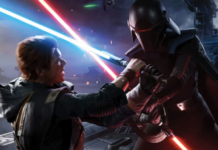Speech Graphics Ltd is an award winning UK-based company, which focuses on cutting-edge lip sync services, pushes the envelope on gaming technology. This tech is a multilingual solution which accurately predicts mouth movement on the human face to represent a person speaking. So in a nutshell, when you speak into a microphone the computer image will animate nearly identical to the way you are speaking in live time.
So what’ the big deal? The time game animators spend on mouth and face movements is quite time consuming. If there was a solid technology that could do it for you, this process would be reduced in difficulty / time ten-fold.
How many times have you played a game ported to a differently country or had ‘less than perfect’ subtitles sync? With this technology this is no longer a problem. This lip syncing service currently covers seven languages including: English, German, French, Spanish, Japanese, Korean and Russian. It is that easy. While the voice acting may not be ideal at least that character’s mouth movements will be accurate.
To put this technology in perspective, BioWare and EA’s MMORPG Star Wars: The Old Republic contains 260,000 lines of dialogue – all that had to be individually animated. I honestly can’t even imagine how much time that all took. Now take that huge recording breaking number (yes, I’m using the extreme as an example) and now animate it for three different languages. Mind. Blown.
The CTO and co-founder of Speech Graphics, Michael Berger says:
Speech is one of the most difficult things to animate convincingly, as the combination of fluidity and accuracy in natural speech is just so hard to capture in facial animation. People are very sensitive to this when you get it wrong because we are all focused on faces.
With our technology we’re aiming for robust high quality, even better than what you can achieve with motion capture. And because it’s audio-driven, it’s at a price point that makes it scalable to huge amounts of speech.
Well there you have it. When you think of this it makes sense, we do focus on facial movements when it comes to speech. In video games we do the same things. I know I’ve made fun of a game before for having rough and non-existent facial movements during dialogue. If this technology can truly make game developing simpler and better, I foresee this catching on rapidly.
Watch the video of non-edited speech using this technology, it may blow you away.







